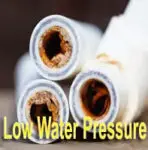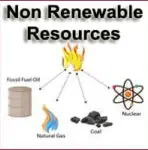Water is a precious resource, and in today’s world, where sustainability is paramount, finding efficient ways to conserve water has become more important than ever. The non-return valve is one often overlooked yet highly effective water conservation device.
This article will explore the secret power of check valves and how they can make water conservation effortless.
The Importance of Water Conservation
Water scarcity is a global issue and every drop of water saved counts. Conserving water helps the environment and reduces utility bills for households and businesses. To achieve effective water conservation, explore innovative solutions and non-return valves play a significant role in this endeavour.
What Are Non-Return Valves?
Non-return valves, also known as check valves or one-way valves, are mechanical devices that allow fluid (in this case, water) to flow in one direction only. They prevent the reverse flow of water, ensuring that once it passes through a pipe or system, it does not return.
How Non-Return Valves Work
Non-return valves utilize a simple yet ingenious mechanism to allow forward flow while preventing backward flow. The valve consists of a flap or a disc that opens when water flows in the desired direction, and it closes to block the flow when there is back pressure or reverse flow.
The Benefits of Non-Return Valves
Prevents Wastage
By effectively blocking the reverse flow of water, non-return valves prevent wastage and ensure water is used only where intended.
Reduces Contamination
It also plays a crucial role in reducing contamination. They prevent contaminated water from flowing into the main water supply, safeguarding drinking water quality.
Saves Energy
By maintaining a unidirectional flow, non-return valves help optimize the efficiency of pumps and other water systems. This, in turn, saves energy and reduces operational costs.
Applications of Non-Return Valves
Plumbing Systems
Non-return valves are commonly used in plumbing systems to prevent backflow, ensuring a safe and efficient water supply.
Irrigation Systems
In irrigation systems, non-return valves help maintain pressure and prevent water from flowing back into the distribution network.
Sewage Systems
Non-return valves are vital in sewage systems, preventing sewage backflow and ensuring the integrity of the wastewater management process.
Installing Non-Return Valves: A Step-by-Step Guide
Installing non-return valves is a straightforward process. Here is a step-by-step guide to help you with the installation:
- Identify the appropriate location for the non-return valve based on the specific application.
- Turn off the water supply to the area where you plan to install the valve.
- Cut the section of the pipe where the valve will be installed using a pipe cutter.
- Clean the pipe ends and the valve connections to ensure a proper seal.
- Connect the valve to the pipe, ensuring a tight fit.
- Turn the water supply back on and check for any leaks.
Maintenance and Care for Non-Return Valves
To ensure the optimal performance of non-return valves, regular maintenance is essential. Here are some maintenance tips:
– Inspect the valve periodically for any signs of damage or wear.
– Clean the valve to remove any debris or buildup that may hinder its functionality.
– Lubricate the moving parts of the valve as recommended by the manufacturer.
Tips for Choosing the Right Non-Return Valve
When selecting a non-return valve, consider the following factors:
– Size and compatibility with your existing plumbing system.
– The flow rate and pressure requirements of your application.
– The valve material is suitable for the type of fluid being handled.
Check valves are the unsung heroes of water conservation, providing a simple yet powerful solution to prevent wastage and contamination. Husting their secret power of non-return valve unlocks a more sustainable future where every drop counts.







